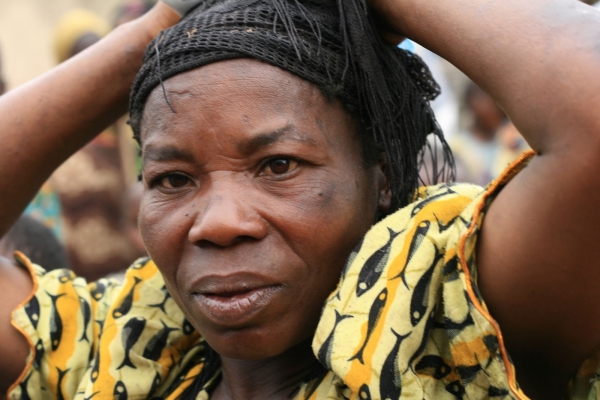On the occasion of the International Day for the Elimination of Violence against Women on 25 November, more than 60 UN experts issued a joint statement saying that, although women represent more than half the world's population, they are at risk of being killed or subjected to violence and intimidation. Violence against women and girls "is the result of intersectional forms of discrimination based on social, political, economic, racial and cultural factors, including in the context of armed conflict". They added that States and the international community have an obligation under international human rights law to combat such violence.
The Office of the UN Special Representative on Sexual Violence in Conflict monitors data on this phenomenon, whose numbers continue to be alarming. Sexual violence has been recognized as a tactic of war and a tool of international terrorism and increasingly used by non-state actors such as armed groups, local militias and criminal organizations. However, the role of armed state actors, including police forces, continues to be substantial.
According to official UN data, this phenomenon is prevalent mainly in Ethiopia, Mali, Myanmar, Nigeria, Democratic Republic of Congo (DRC), Syria and South Sudan. In his latest report, the UN Secretary-General stressed that the pandemic has amplified gender-based inequality, which is one of the root causes and main factors of violence in war and peace contexts. The pre-existing problem of low complaint rates was compounded by lockdowns, curfews, limited access to health worker facilities and the reduction of many medical services, which created additional barriers to accessing emergency post-sexual violence care and reproductive health treatment. In other words, the pandemic has also contributed to a more complex picture with regard to access to justice, as the lockdown has also affected reporting mechanisms and the work of investigators and judges, lawyers, affecting the whole justice mechanism. In war-torn contexts, where acts of sexual violence are frequent - thinking of detention facilities, refugee camps, rural areas - monitoring of this crime has unfortunately been significantly reduced.
Sexual crimes, including rape and forced nudity, are also committed against adult men. Crimes committed against male individuals are more difficult to detect as the stigma attached to having experienced sexual violence leads men and boys not to report it. During 2018, sexual violence was confirmed as a tool serving conflict strategies. Sexual violence was used as a means to remove unwanted groups: for example, UN sources reported that in South Sudan, allied militias raped women and girls as part of a campaign to expel opponents from the Southern Unity State. Sexual violence was also used as a means of repression, terror and control. In the Tanganyika province of the Democratic Republic of the Congo, the warring Twa and Luba militias violated women, girls and boys from their respective ethnic communities. In the Syrian Arab Republic and Burundi, armed actors, victims of gang rape and sexually humiliated detainees, were perceived as political opponents. Sexual violence appears to be a widespread tactic employed by terrorist organizations, as demonstrated by the case of Nigeria where women and girls have been abducted and raped by terrorist groups. According to the report, 'sexual violence meets the strategic objectives of terrorists, including displacement of populations, acquisition of information through interrogation ... destabilization of social structures ... sexual violence has also been a recurrent feature of recruitment by terrorist groups'. Sexual violence is also used to increase the economic resources available to terrorists, who have set up real markets (territorial and online) through which the trade in sex slaves is carried out. The revenue from this market provides terrorists with significant income through which to finance their activities.
As for national cases in DRC, in 2018 the United Nations Stabilisation Mission in the Democratic Republic of the Congo (MONUSCO) documented 1,049 cases of conflict-related sexual violence against 605 women, 436 girls, four men and four boys. The majority of cases (741) were attributed to armed groups, while 308 were attributed to the Armed Forces of the Democratic Republic of Congo and the Congolese National Police. In Central African Republic, the United Nations Multidimensional Integrated Stabilisation Mission in the Central African Republic (MINUSCA) documented 179 incidents of violence.
Author: Silvia Luminati







